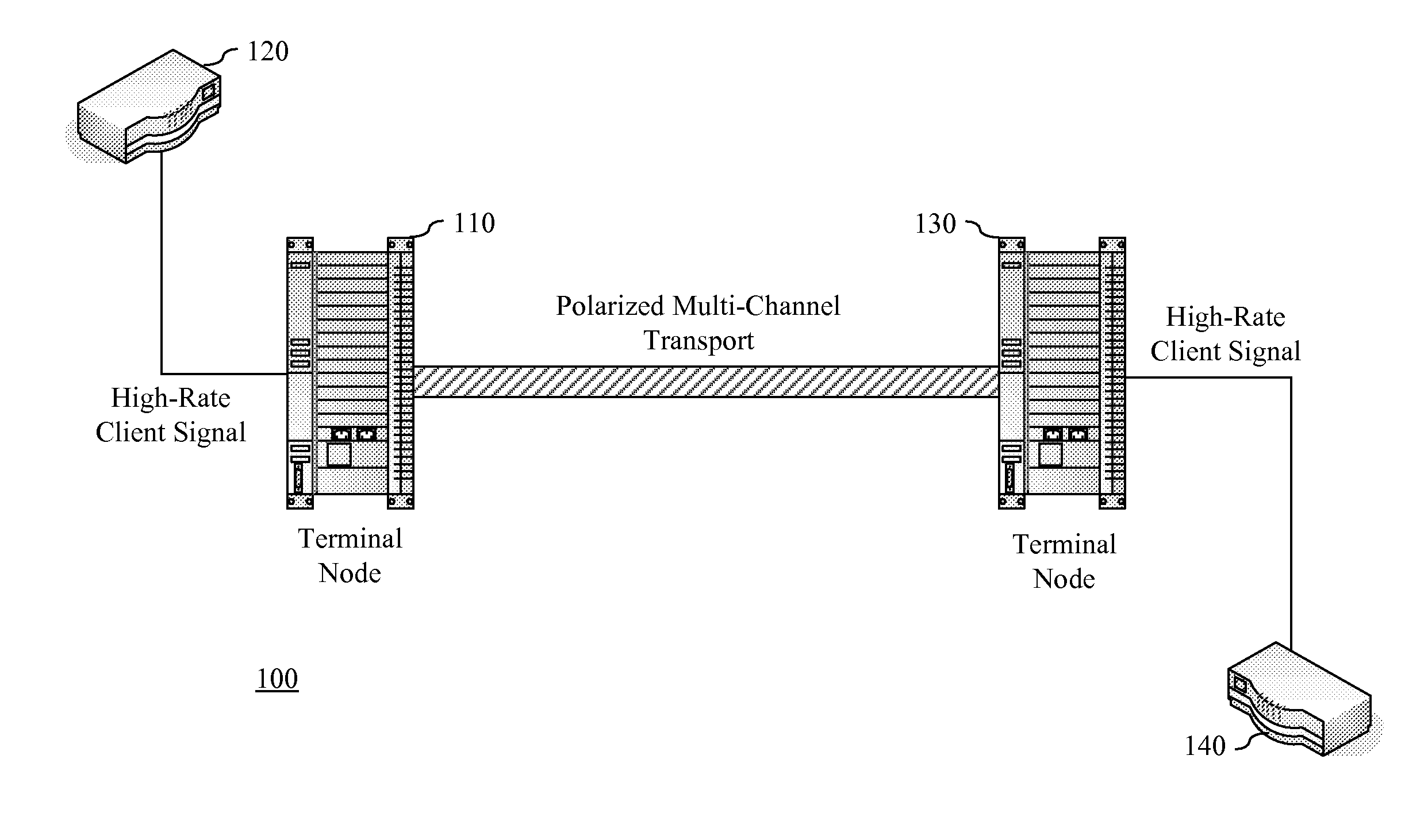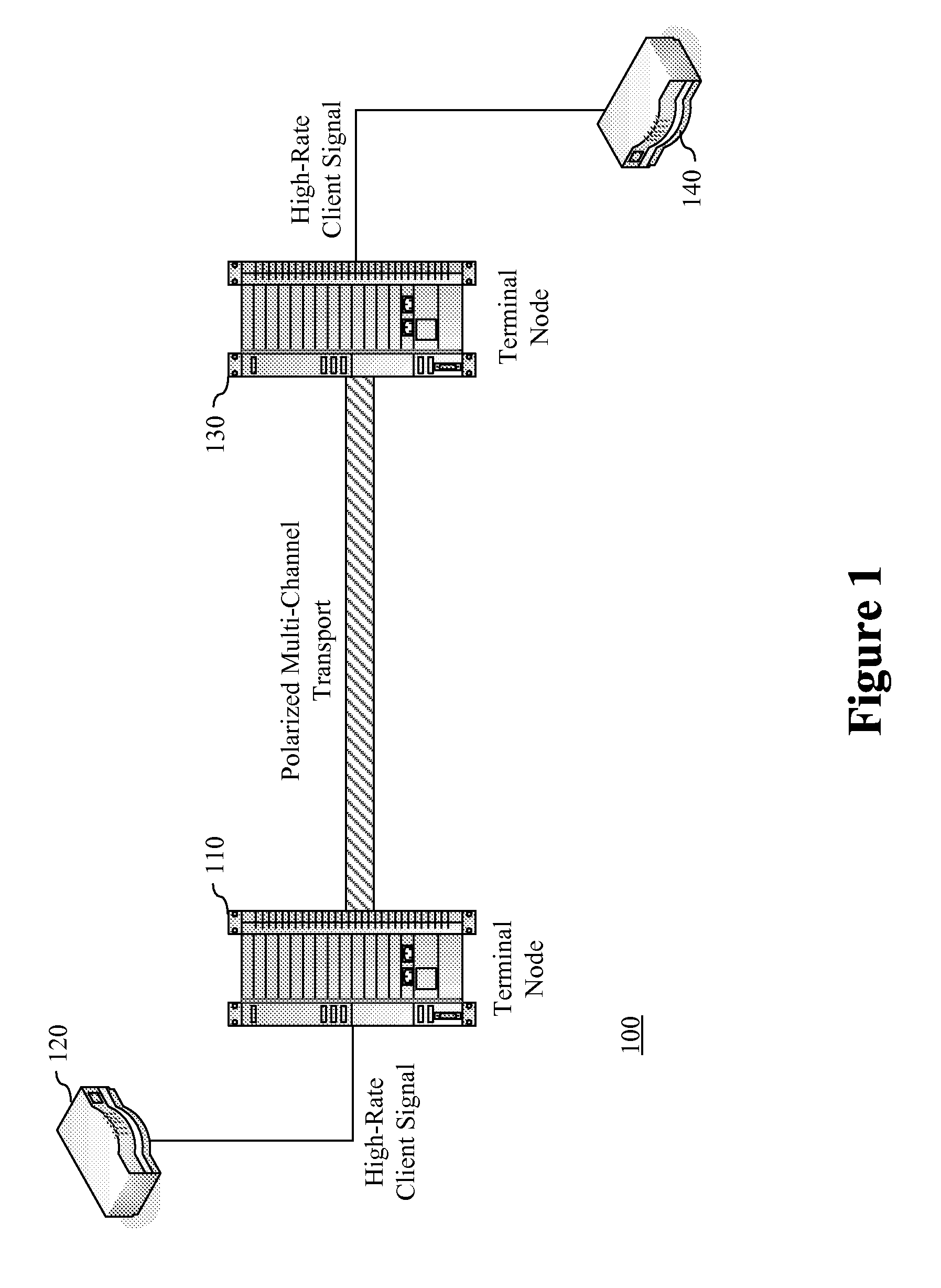Skew Compensation Across Polarized Optical Channels
a polarized optical channel and skew compensation technology, applied in the field of frame alignment and skew compensation across polarized optical channels, can solve the problems of skew between polarized channels, errors may be generated, and the reconstruction of 100 gigabit ethernet signals becomes more difficult, so as to achieve more efficient and accurate alignment and skew compensation.
- Summary
- Abstract
- Description
- Claims
- Application Information
AI Technical Summary
Benefits of technology
Problems solved by technology
Method used
Image
Examples
Embodiment Construction
[0036]Embodiments of the present invention provide systems, devices and methods for managing skew within a polarized multi-channel optical transport system. In a DP-QPSK system, skew between polarized channels is compensated within the transport system by adding latency to at least one of the polarized channels. The amount of added latency may depend on various factors including the skew tolerance of the transport system and the amount of skew across the channels without compensation. This latency may be added optically or electrically, and at various locations on a channel signal path within a transport node, such as a terminal transmitter or receiver. Additionally, various embodiments of the invention provide for novel methods of inserting frame alignment bit sequences within the transport frame overhead so that alignment and skew compensation may be more efficiently and accurately performed at the transport receiver.
[0037]In the following description, for purpose of explanation, ...
PUM
 Login to View More
Login to View More Abstract
Description
Claims
Application Information
 Login to View More
Login to View More - R&D
- Intellectual Property
- Life Sciences
- Materials
- Tech Scout
- Unparalleled Data Quality
- Higher Quality Content
- 60% Fewer Hallucinations
Browse by: Latest US Patents, China's latest patents, Technical Efficacy Thesaurus, Application Domain, Technology Topic, Popular Technical Reports.
© 2025 PatSnap. All rights reserved.Legal|Privacy policy|Modern Slavery Act Transparency Statement|Sitemap|About US| Contact US: help@patsnap.com



